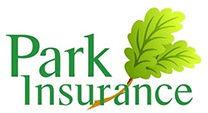Commercial Insurance Fraud – How investigation helps to keep your premiums down and policyholders safe
For as long as there’s been insurance, there have been those who try to defraud the system. Perhaps one of the commonest and most well-publicised type of insurance fraud in recent years has been the classic ‘cash for crash’ claims, where road traffic accidents are staged and fraudsters claim for damages to their vehicles and injuries to the occupants. This type of fraud costs honest motorists millions of pounds every year in higher insurance premiums, as the industry tries to recoup the massive losses it suffers as a result of suspicious claims.
But fraud is prevalent in all walks of life, including commercial insurance claims. The losses every year for both business and household insurance claims runs into the billions. Yes, billions. In fact, the industry loses over £3billion a year in fraudulent claims, piling on a whopping £50 per year in additional premiums to every single consumer, whether that’s commercial insurance or personal insurance.
The Insurance Fraud Taskforce
So, it’s clear that fraud is a serious problem for everyone. However, the insurance industry is constantly working to combat the criminals, whether it’s a cash-for-crash scam, an injury at work claim or even something as dramatic as arson. With such high numbers involved, the industry would be foolish to simply sit back and do nothing.
Apart from the criminal aspect of fraud and the cost to insurance companies, it’s bad for business. Consumers don’t like paying for the consequences of criminal activities, and with the internet making life even easier for fraudsters, it really is time to get tough on fraud and reassure a wary public. And that’s exactly what the insurance industry has been doing.
In-house investigations
At the beginning of 2016, the Insurance Fraud Taskforce was initiated to do an in-depth investigation into how effectively the industry was protecting itself against ever-more resourceful fraudsters. Supported by a plethora of the great and the good from the industry, including the British Insurance Brokers Association (BIBA), the Taskforce was set up in January.
Their interim report in May talked of some tough measures needed to combat the rising problem of commercial insurance fraud in particular.
Highlights of the report included:
- Persuading the Government to review ways in which fraudulent late claims can be discouraged through changes to court costs and evidence rules
- Discouraging ‘Crash, cash and dash’ quick claims by slowing down the process. So rather than automatically opting for a fast-track claims process, older claims would be filtered through the to the small claims courts, which, frankly, are notorious for their drawn-out deliberations. The thinking is that this prolonged process would discourage fraudsters aiming to get in and out of the system quickly before anyone had the chance to query their claim.
- Reducing recoverable costs by 50% if an injury claim is notified late
- Introducing a damages award range for soft tissue injuries, which would hopefully reduce the number of whiplash claims and other fraudulent slip, trip or fall claims made against business owners.
In addition, the Taskforce recommended a spot of in-house cleaning by the legal industry by demanding that the Solicitor’s’ Regulation Authority (SRA) be tougher on fraud by working with the Claims Management Companies’ (CMC) regulator more closely. The primary concern in this instance was to robustly enforce referral fee bans.
There were also queries on regulation, and the Taskforce recommended that a tougher line is taken against organisations that were not correctly regulated or registered.
Other advice included a clampdown on nuisance calls and texts, and, surprisingly, a greater degree of data sharing so that everyone had access to information on fraudulent claims.
Joined-up thinking
This last point certainly raised a few eyebrows initially and was queried by some in line with the Data Protection Act. However, what it actually represents is a bit of joined-up thinking by an industry that’s determined to get its affairs in order and present a cleaner, more trustworthy image to the public.
By sharing information on fraudsters, it allows commercial insurance providers to spot patterns and perhaps stop new cases of fraud popping up before they’ve had a chance to eat into this year’s profits and customers’ pockets through higher premiums.
What this all means for the average commercial insurance customer is a fitter, leaner industry that’s protecting both its own and its customers’ interests by weeding out the fraudsters at the source. There’s also the small matter of the criminality of insurance fraud. It’s always been regarded by its perpetrators as a relatively ‘victimless’ crime, and indeed, sometimes fraudsters even manage to convince themselves that they’re more of a ‘Robin Hood’ character, rather than a simple criminal.
But insurance fraud is not victimless, as the earlier figures prove. It costs every single customer an extra £50 every year (at least). And for businesses in particular who are hit with much higher commercial insurance costs, it can turn into a millstone that can force cash-strapped business owners to consider cutting back on their cover.
Premeditated Vs Opportunistic Fraud
There are two key types of insurance fraud that the industry is determined to tackle – premeditated fraud and opportunistic fraudulent claims.
Combatting premeditated fraud is the key remit of the IFB or Insurance Fraud Bureau. Established in 2006, they act as a central hub to collate fraud data and intelligence. Working closely with the Police’s own Fraud units (including the Serious Fraud Office), they’ve been at the vanguard of combatting the headline-grabbing ‘cash-for-crash’ fraudsters.
Their work has also been important in the revision of the legislation surrounding soft tissue claims such as whiplash – an area notorious for its propensity for both premeditated and opportunistic fraudulent claims.
Premeditated fraud is often incredibly complex, highly organised and run by motivated individuals. It is also often a sideline for criminal organisations with much more sinister interests too. So this is by no means a ‘victimless’ crime. Premeditated fraud also often relies on the help of compromised operatives within the legal and insurance profession.
So, the recommendation by the Taskforce that internal reviews needed to be a part of the general ‘cleaning house’ process for both the legal and insurance industries was just as important as information sharing. This not only roots out solicitors and brokers who have operated illegally for their own gain but reassures the public that the commercial insurance industry can once again be trusted.
Grabbing an opportunity
Opportunistic fraud can be more challenging to combat, as it relies on consumers’ making a poor decision at a time when they’re most vulnerable (usually after an accident, as in this case), and being goaded into making a suspect claim through the ‘pester power’ of nuisance calls and texts.
The Taskforce also identified several specific areas where opportunistic fraudulent claims are on the rise, including noise-induced hearing loss, which now appears to be the replacement to the traditional ‘whiplash’ claim.
Protecting the genuine victims
All this internal housekeeping and joined-up thinking isn’t just so that consumers pay less for their commercial insurance, car cover or home and contents insurance (although that may well be a welcome knock-on effect as the cases of fraud start to drop). It also means that the genuine victims – those whose livelihoods have been affected by disasters or who have suffered personal and often life-changing injuries – get the help they need when they need it.
Rather than being lost under a mountain of opportunistic slip, trip and fall claims against innocent businesses, or employees who claim for non-existent personal injuries at work, genuine victims are going straight to the front of the queue. It also means that genuine cases are processed more quickly, which is particularly important in cases where a victim has suffered life-changing injuries, or a business has been devastated by floods or a fire.
The emphasis for fraud units now is to bring more cases of ‘fundamental dishonesty’ for fraudulent claimants, particularly opportunistic fraud. While the premeditated fraud perpetuated by criminal gangs is being investigated by the police, it’s these one-off ‘chancer’ claims that can really damage the reputation of the industry.
By being seen to take a proactive stance on these opportunistic fraudsters, the insurance industry is not only improving its own image but cutting the possibility of anyone else seeing if they can ‘get away with a dodgy claim’. Highly publicised cases where insurers bring fundamental dishonesty cases to court act as an effective deterrent. And for the consumer, it means lower premiums, and more trust in the insurance providers that they are genuinely ‘taking care of business’.
Building on a strong foundation
The conclusions of the Taskforce’s final report did emphasise that there is still a way to go before everyone within the insurance industry is on board with its recommendations. But 2016 can go down as a year when an effective forum was finally established where the challenges of insurance fraud could finally be tackled head on by an industry determined to clean up its act and present a more trustworthy image to its public.
From this point, the industry now has a solid foundation upon which to build, ensuring their ongoing investigations really are keeping premiums down, and policyholders safe.

